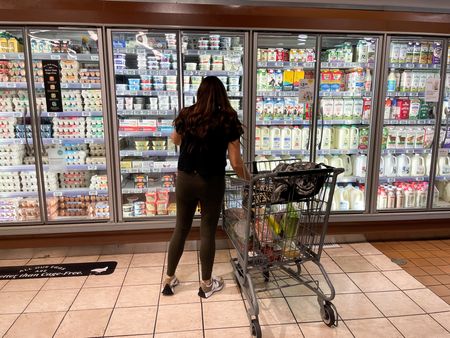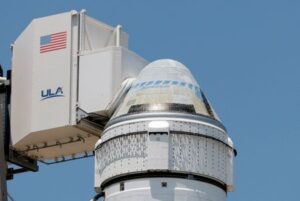By Lucia Mutikani
WASHINGTON (Reuters) – U.S. prices accelerated in January amid a surge in the costs of services like housing and finance, but the annual increase in inflation was the smallest in three years, keeping a mid-year interest rate cut from the Federal Reserve on the table.
The report from the Commerce Department on Thursday also showed consumer spending slowing last month, restrained by decreases in outlays on goods, including motor vehicles, furniture and other long-lasting household equipment.
The inflation and consumer spending readings were in line with economists’ expectations. But with the costs of services increasing by the most in 12 months, likely as businesses raised prices at the start of the year, the timing of the first Fed rate cut remains uncertain. Most economists do not expect the price increases to repeat in February.
Services, which also include healthcare, restaurants, hotels and motels as well as recreation, are at the heart of the U.S. central bank’s fight against inflation. Policymakers have said they are in no rush to start lowering borrowing costs.
“The economy is not going off the rails and the inflation scare in January seems unlikely to continue, so Fed officials are still likely to consider a first interest rate cut when they meet in June,” said Christopher Rupkey, chief economistat FWDBONDS.
The personal consumption expenditures (PCE) price index rose 0.3% last month, the Commerce Department’s Bureau of Economic Analysis said. Data for December was revised lower to show the PCE price index gaining 0.1% instead of the previously reported 0.2%. Goods prices fell 0.2% as the cost of energy dropped 1.4%, offsetting a 0.5% rise in food prices.
There were also decreases in the prices of motor vehicles and parts, clothing and footwear. But recreational goods and vehicles cost more, as did furnishings and household equipment.
In the 12 months through January, PCE inflation rose 2.4%. That was the smallest year-on-year increase since February 2021 and followed a 2.6% advance in December.
The monthly data mirrored rises last month in consumer and producer prices, which were also attributed to increases at the start of the year. Economists believe the model used by the government to strip out seasonal fluctuations from the data is probably not fully incorporating these price hikes.
Excluding the volatile food and energy components, the PCE price index increased 0.4% last month. That was the largest monthly rise since last February and followed a downwardly revised 0.1% gain in December. The so-called core PCE price index was previously reported to have climbed 0.2% in December.
Services prices jumped 0.6%, the most since last January, after climbing 0.3% in December. They were boosted by a 0.6% rise in the cost of housing and utilities. The cost of financial services and insurance surged 1.3%, likely reflecting higher share prices. Prices for services at restaurants, bars, hotels and motels rose, as did those for recreation and healthcare.
Core inflation increased 2.8% on a year-on-year basis in January, the smallest advance since March 2021, after rising 2.9% in December. The Fed tracks the PCE price measures for its 2% inflation target. Monthly inflation readings of 0.2% over time are necessary to bring inflation back to target.
Stocks on Wall Street were trading mostly higher, while the dollar fell against a basket of currencies. U.S. Treasury prices rose.
CONSUMER SPENDING COOLS
PCE services inflation excluding energy and housing shot up 0.6% last month, the most since March 2022, after rising 0.3% in December. The so-called super core inflation increased 3.5% on a year-on-year basis in January after rising 3.3% in December.
The super core inflation has risen at a 4.1% annualized rate in the past three months. Policymakers are watching the super core measure to assess progress in their battle against inflation.
Financial markets have pushed back expectations for a rate cut to June from May. Since March 2022, the U.S. central bank has raised its policy rate by 525 basis points to the current 5.25%-5.50% range.
With inflation picking up, price-sensitive consumers slowed their spending last month. Consumer spending, which accounts for more than two-thirds of U.S. economic activity, rose 0.2% after increasing 0.7% in December. When adjusted for inflation, spending fell 0.1% after rising 0.6% in December. This suggests that consumer spending moderated early in the first quarter after helping to power economic growth in the fourth quarter of 2023.
Spending remains supported by a still-tight labor market, though there are signs it is taking a bit longer for people who are unemployed to find new jobs.
A separate report from the Labor Department on Thursday showed initial claims for state unemployment benefits increased 13,000 to a seasonally adjusted 215,000 for the week ended Feb 24.
The number of people receiving benefits after an initial week of aid, a proxy for hiring, increased 45,000 to 1.905 million during the week ended Feb. 17. The so-called continuing claims data covered the period during which the government surveyed households for February’s unemployment rate.
Continuing claims rose between the January and February survey weeks, suggesting the unemployment rate could rise this month from 3.7% in January. A Conference Board survey on Tuesday showed consumers less upbeat about the jobs market in February.
For now, the labor market is supporting wages, which rose 0.4% in January, contributing to the 1.0% jump in personal income. That was the largest increase in a year and followed a 0.3% gain in December. Income was boosted by a 3.2% cost-of-living adjustment for Social Security recipients and a special dividend paid by Costco Wholesale Corp.
But a sharp increase in taxes combined with inflation left income at the disposal of households unchanged after a 0.3% rise in December. With income outpacing spending, the saving rate rose to 3.8% from 3.7% in December.
“Consumer spending will continue to gradually increase over the course of 2024, although at a slower pace than in 2023 as job and wage gains soften,” said Gus Faucher, chief economist at PNC Financial. “The economic expansion should continue throughout this year and into next.”
(Reporting by Lucia Mutikani; Editing by Chizu Nomiyama and Paul Simao)





